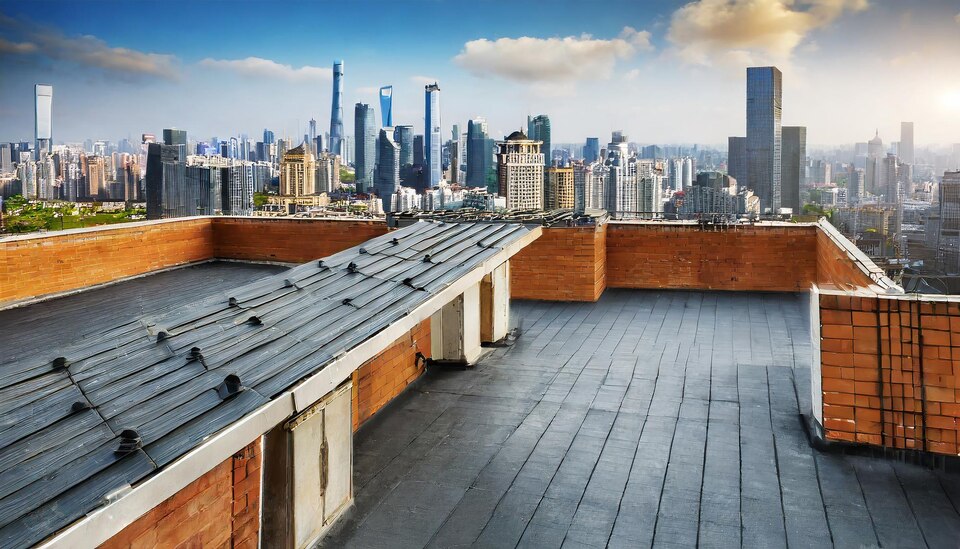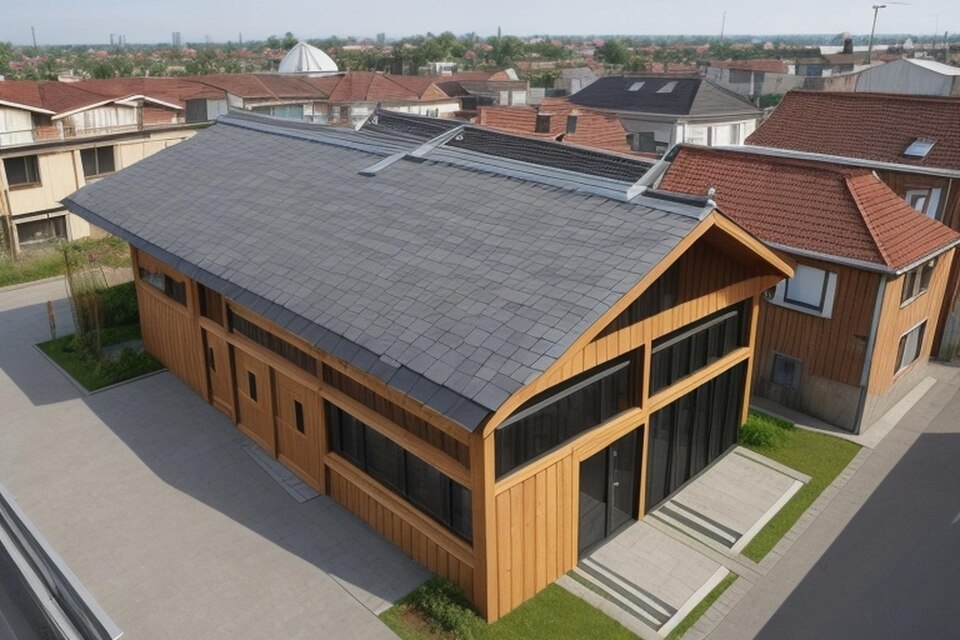Commercial roofs are exposed to various weather elements, and one of the most damaging natural phenomena is hail. Hailstones, ranging in size from small pebbles to large chunks of ice, can wreak havoc on commercial roofing systems. In this article, we will explore the signs, inspection process, and costs associated with how much hail damage to replace roof.
Understanding Hail Damage on Commercial Roofs
What Causes Hail Damage
Hail damage occurs when hailstones impact the roof surface, leading to cracks, fractures, and tears in the roofing materials. The severity of the damage depends on the size and density of the hailstones and the condition of the roof.
- Hail damage is caused by the impact of hailstones during severe thunderstorms.
- The size and density of hailstones play a significant role in the extent of damage to property.
- Hail damage can lead to dents, cracks, granule loss, and punctures in roofing and other surfaces.
Common Signs of Hail Damage
Identifying how much hail damage to replace a roof is crucial to prevent further deterioration and ensure the longevity of the building’s structure. Hailstorms can wreak havoc on roofs, causing extensive damage that might not always be immediately apparent. Common signs include:
- Dents
- Granule loss
- Cracks
- Punctures in the roofing material
Importance of Prompt Inspection
Promptly inspecting the roof after a hailstorm is essential to mitigate potential risks and safeguard the structural integrity of the commercial building. Hail damage, if left unattended, can have serious consequences and escalate into more significant issues that require costly repairs or even a complete roof replacement.
- Prompt inspection helps identify and address issues early, preventing further deterioration.
- Timely inspection allows for quick response to potential safety hazards or structural damage.
- Inspections extend the lifespan of the property.
Assessing Hail Damage on Commercial Roofs
Roof Inspection Process
When dealing with the subject of “how much hail damage to replace roof”, start by examining the roofing material for visible signs of damage. Look for dents, cracks, and missing granules. Additionally, check the gutters and downspouts for any accumulation of granules or roofing debris.
- They inspect the seals around vents, chimneys, and other roof penetrations to ensure they are intact and watertight.
- The condition of roofing materials is carefully evaluated to identify wear, deterioration, or hail damage.
- The roof inspection process helps determine the overall condition of the roof.
Severity Grading of Hail Damage
How much hail damage to replace a roof can be graded on a scale from minor to severe. Understanding the extent of the damage helps in determining the appropriate repair or replacement solution. Furthermore, roofing professionals often use a grading scale to assess the severity of hail damage.
| Intensity of Hail Damage | Impact of Hail Damage |
| Minor | Small dents or granule loss on limited areas of the roof surface. |
| Moderate | Widespread dents, cracks, and granule loss affect multiple sections of the roof. |
| Significant | Extensive damage with deep punctures, torn materials, and compromised structural integrity. |
| Severe | Catastrophic destruction, large-scale punctures, and immediate water leakage. |
How Much Hail Damage to Replace Roof (or Repair?)
Repairing a roof damaged by hail usually costs around $4,250 on average. If the damage is minor, and you can fix it yourself, it may be less than $200. But, if the damage is severe, you might need to replace the whole roof, which can cost more than $32,500.
On average, the repair cost for each square foot of the roof is between $6 to $12.50. Since roofing is often sold in 100-square-foot squares, that means it’s about $600 to $1,250 per square.
Repair vs. Replacement: Making the Right Decision
Below, we have outlined the different situations when repair or replacement might be appropriate for a hail-damaged commercial roof based on the severity of the damage.
| Hail Damage Severity | Repair | Replacement |
| Minor | Small dents, granule loss, or cracks can be repaired. – DIY or professional repairs are viable options. | Replacement is generally not necessary unless there are other underlying issues. |
| Moderate | Widespread dents, cracks, or granule loss can be professionally repaired. | Replacement might be considered for extensive damage or roofing material reaching the end of its lifespan. |
| Significant | Roofing professionals can address large dents, punctures, or isolated issues. However, repair may still be possible for localized damage. | Replacement is considered for widespread damage or if the roofing integrity is significantly compromised. |
| Severe | Immediate repairs might be done for emergency situations. But, repair might not be a long-term solution for severely damaged roofs. | Full roof replacement is recommended for severe hail damage to ensure maximum protection and longevity. |
Hiring a Reliable Roofing Contractor
Finding the best commercial roofing contractor when it comes to how much hail damage to replace the roof or repair is essential to ensure the job is done efficiently and effectively. Here are some tips to help you find the right contractor:
- Experience and Expertise: Look for roofing contractors with a proven track record of handling hail damage repairs.
- Local Reputation: Check the contractor’s reputation within the local community.
- Licensing and Insurance: Ensure that the contractor is licensed to perform roofing work in your area.
- Certifications: Look for contractors certified by reputable roofing manufacturers.
- Written Estimates: Obtain written estimates from multiple contractors.
- Warranty and Guarantees: Inquire about the warranties offered by the contractor for both labor and materials.
- Local Presence: Choose a contractor with a physical presence in your area.
- Transparent Communication: Opt for a contractor who communicates openly and transparently throughout the process.
- Written Contract: Once you’ve selected a contractor, ensure that all project details, including timelines, payment terms, and warranty information, are outlined in a written contract.
- Avoid Storm Chasers: Be cautious of contractors who show up after a hailstorm (commonly known as storm chasers) and go door-to-door offering their services.
Wrap Up
Hail damage can be a significant concern for commercial roofs, but timely inspection and appropriate action from roofing professionals can prevent further complications. Whether it’s repair or replacement, investing in professional commercial roofing contractors like Apex Commercial Roofing LLC ensures a safe and secure roofing system for years to come.
Contact us for more details!
Visit Apex Commercial Roofing LLC at Our Cherry Hill Location
811 Church Rd #105,
Cherry Hill, NJ 08002,
United States
For professional roofing services, we invite you to stop by or reach out to us.







